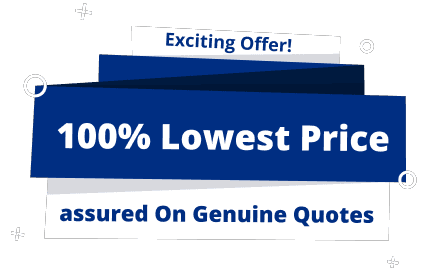Recent Posts
- Which Kind Of Company Will Be Good..
- Which Kind Of Company Will Be Good..
- Which Kind of Company Will be Good..
- Why India is Ideal for Digital Mar..
- 10 Best Countries to Work For Digi..
- Which Kind Of Company Will Be Good..
- 11 Best Countries To Work For Java..
- The Demand For Java Developers In ..
- Best Countries To Work For Web Des..
- Best Countries To Work For SEO Pro..
Scaled Agile Framework (SAFe) Business Value
Organizations deploy the Scaled Agile Framework (SAFe) to implement Agile practices throughout the organization, and it helps them plan the business and its results. Here, the Agile Release Trains comprising various Agile teams make commitments for a short time called Program Increments (PI) to deliver these results, which, in turn, improves trust and alignment between the developers and the Stakeholders. The PI objectives are the medium to convey these. The primary purpose of PI objectives is to enable the teams to provide some predictable and dependable amount of forecasting because, with significantly less forecasting, organizations can't plan. With excessive forecasting, organizations may take up too much business and restrict agility. The PI objectives provide the middle ground.
These PI objectives at the PI planning event are presumed to be the Business Value according to the Agile Release Train (ART). This alignment helps in developing trust between the teams and Stakeholders. Before moving further, let us understand what business value is.
What is business value?
Every Agile team aims to deliver the right thing at the right time. The PI objectives make sure teams achieve this with cooperation and collaboration. We will look at the relationship between business value and PI objectives later in this article.
Every business has some value. If a business does not have value, then it is practically non-existent. And every business is evaluated for its value. The business value is the benchmark measure of value that is used for the evaluation of a business. According to the Project Management Book Of Knowledge (PMBOK), the business value is a business's total value. It is the total of all the elements of a business, whether physical or non-physical, corporeal or non-corporeal. A business's physical or tangible elements may include the people working in the organization, plant and machinery, pictures, Stakeholder equity, monetary assets, and utilities. The non-physical or intangible elements may include brand, recognition, trademarks, market presence, goodwill, and benefit to the people. Simply speaking, business value includes every element of the business, whether it holds a monetary value or doesn't. Business value can constantly be re-adjusted by the organization with more efficient management of the project at hand.
Every organization, irrespective of its character, i.e., whether it is a private enterprise or a government organization, is engaged in some business activity. But it is not practical to weigh every organization on the same scale. The concept of business value can't be standardized and varies per the organization's needs. But regarding SAFe organizations, business value takes on a different role. As we have mentioned earlier, the concept of business value can't be standardized and re-adjusted, so the obvious question arises: is it possible to measure it? The answer is an emphatic yes. Certain factors can help in determining the business value of a specific organization:
Profitability
Revenue
Brand recognition
Share in the market
Cross-selling ratio
Customer retention
Customer loyalty
Customer satisfaction
We will now see how SAFe affects the business value of an organization.
SAFe Agile business value
There is a relationship between the PI objectives and the business value. These are created in the PI planning meetings. The Scaled Agile Framework business value comes through when the teams complete these PI objectives. These are listed below:
The technical team and the business team communicate in the same language
Teams are focused on a joint mission, and there is an enhanced level of collaboration and cooperation between them
Teams can develop a distinct vision during the PI
PI objectives provide the metrics in the form of all important program predictability measure which enables the Agile Release Train (ART) and the individual teams to raise their performance
They disclose the interdependencies of the teams so they can be suitably handled for the system to be successful
.And lastly, the PI objectives promote communication between the leadership of the organization and the teams and bring out how the individual team has contributed to the business value
While the PI objectives are established during the PI planning meeting in SAFe, a business value is allotted to each PI objective by the business owners collectively during direct interaction with the team. This interaction between the business owners and the teams is significant because they are told why these objectives need to be achieved, and the strategy to achieve them is discussed. Every PI objective is given a value on a scale of 1 to 10 by the business owners, with 1 being the lowest and 10 being the highest. The SAFe business value is not a value that can be or is calculated. Instead, it is an allotted value. Moreover, it is not an output of something but an input to help develop a strategy for executing the plan.
Benefits of SAFe business value:
The first and foremost benefit is that when business owners hold discussions with the teams and assign business values to the PI objectives, it allows them to align with the product management and the Agile teams. The other benefits of assigning business value to the business objectives are:
These business values reflect how effective the objectives are - The business owners thoroughly look at the PI objectives of each team and allot business value to them one by one. If the value assigned does not match the expectations of that team, it means that either the objectives are not practical or the team has set some unrealistic goals. The team can then readjust them and make them more exhaustive so that they are clearer to all the Stakeholders and are more meaningful.
Business owners, product management, and system architects become more aligned - There may be differences in perception or vision regarding the objectives between business owners, system architects, and product management. Business owners may want the objectives to be more feature-oriented, while architects may insist that enablers are the pillars of the system, so objectives are based on them. Moreover, if the priority is based on features and the business value assigned does not match with it, this also gets highlighted. This creates complete alignment between the business owners, system architects, and product management.
Business value provides a prescription to the Agile teams for implementation - Even after the PI planning meeting, there would be a lot of unpredictability in the PI. The business value would indicate to the Agile teams that if they need more time to achieve all the PI objectives, the PI objectives having more value should be given higher priority. This helps the Agile teams focus on objectives and values, thus helping them in better decision-making that is more beneficial to their business and customers.
Assigning values to the objectives instead of ranking them makes business or customer needs more explicit. This is an excellent benefit if assigning business values to PI objectives as it demonstrates the needs of the business or the customer. If objectives are given a ranking, it would only set them in order of importance without any consideration for the requirements of the business. So, some objectives with the same value will show the business need as envisaged by the business owners, but if all the objectives have the same value, it will result in ambiguity.
So, we have seen the business value of SAFe and how it benefits the business. The Scaled Agile Framework helps add value to the business by first building trust among the people and the teams in the organization, which promotes collaboration and cooperation between them and then aligns them towards a common goal and mission. The business values assigned to the PI objectives during the PI planning are the indicators of the importance of each objective and propel the teams toward accomplishing these objectives. The business owners and the Agile teams know the direction in which they must move.
Want to Level Up Your Skills?
LearnNThrive is a global training and placement provider helping the graduates to pick the best technology trainings and certification programs.
Have queries? Get In touch!

